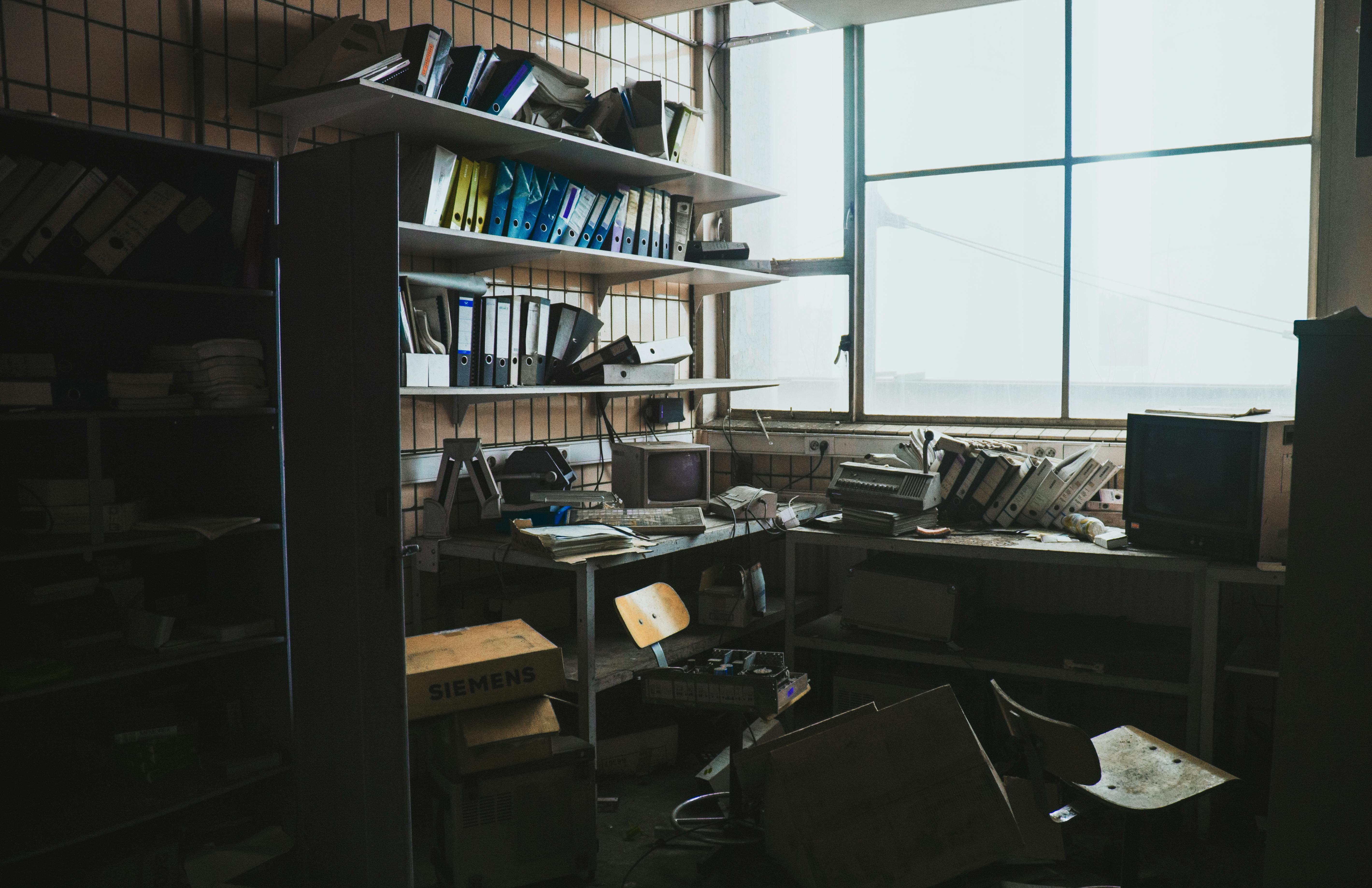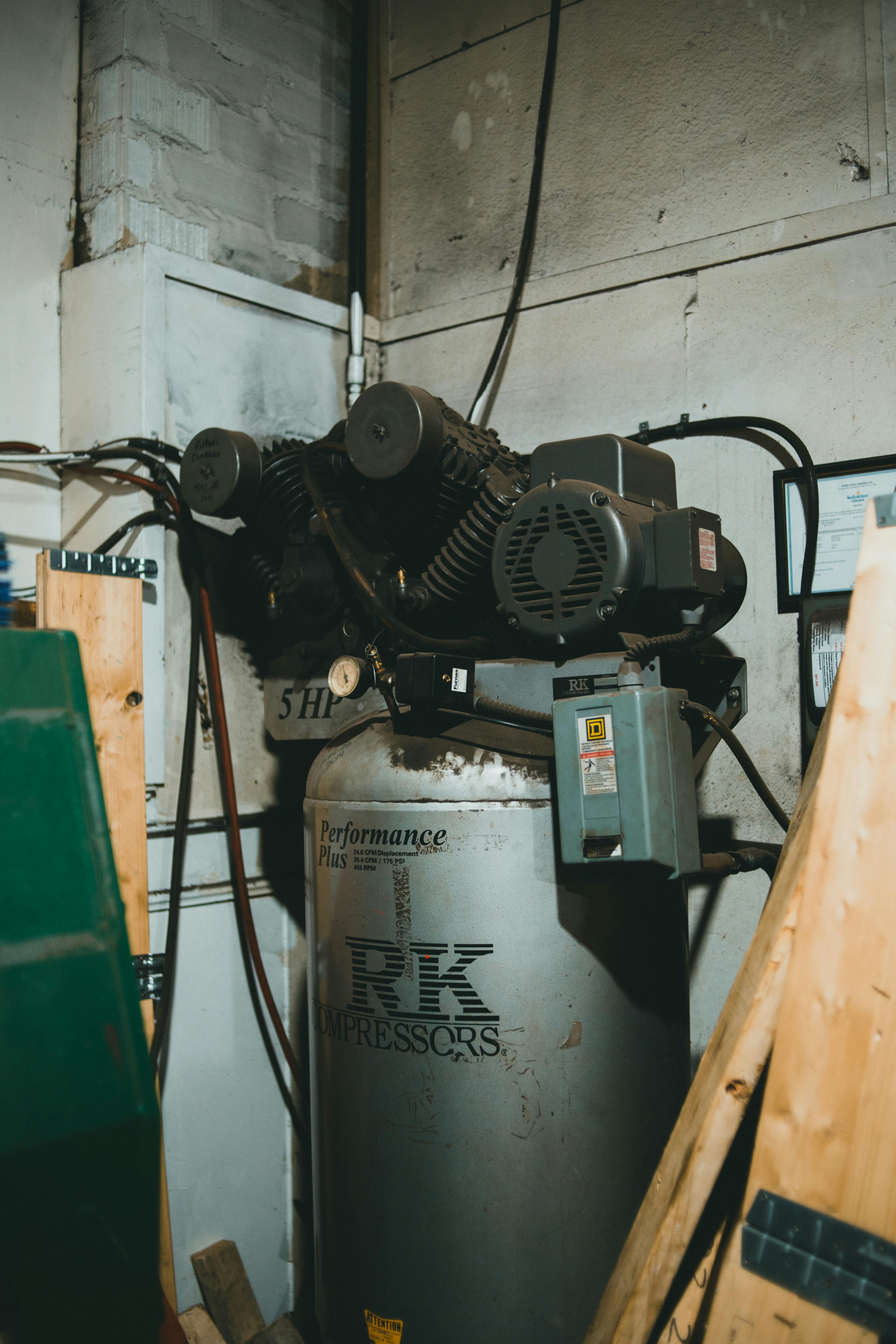Are you struggling with a full storage issue on Windows 11? You’re not alone! Many users find themselves facing the frustrating challenge of a cluttered hard drive that slows down their system. In this comprehensive Windows 11 Storage Full Cleanup Guide, we’ll show you how to unlock space effortlessly and reclaim your PC’s performance. Discover the best tips and tricks for a thorough storage cleanup, ensuring your device runs smoothly and efficiently.
In this guide, we’ll delve into the most effective strategies for managing your Windows 11 storage. From utilizing built-in tools like Storage Sense to identifying and removing unneeded files, we’ll cover everything you need to know to free up precious disk space. Are you tired of seeing those pesky notifications about low storage? Well, worry no more! We’ll also tackle how to delete temporary files, manage your apps, and optimize your cloud storage options for a more streamlined experience.
With the right approach, you can transform your PC back to its peak performance with just a few simple steps. So, if you’re ready to say goodbye to storage headaches and hello to a smoother computing experience, read on! You’ll learn about disk cleanup, managing system restore points, and other essential tips to ensure your Windows 11 device is always running at its best. Don’t let a full storage slow you down; let’s dive into this ultimate cleanup guide together!
7 Essential Steps to Free Up Disk Space in Windows 11: A Comprehensive Cleanup Guide

Are you tired of seeing that annoying “low disk space” warning on your Windows 11 computer? You are not alone! Many users facing this issue struggle to find easy ways to free up space without losing important files. Fortunately, there are some simple steps you can take to clear out unnecessary clutter and make your system run better. In this article, we’ll dive into 7 essential steps that anyone can use to free up disk space in Windows 11.
1. Use Storage Sense Feature
Windows 11 comes with a built-in feature called Storage Sense. It automatically cleans up temporary files and content from the Recycle Bin. To enable it, go to Settings > System > Storage and toggle on Storage Sense. You can also set it to run automatically when your disk space get low. It’s like having your own digital maid!
2. Empty the Recycle Bin
It sounds simple, but many users forget about the Recycle Bin. Files stored there still take up space. Right-click on the Recycle Bin icon on your desktop and select Empty Recycle Bin. It can free up several gigabytes, depending on how much junk you’ve been keeping.
3. Uninstall Unused Apps
Over time, you might accumulate apps that you no longer use. These can take up valuable space. To remove them, go to Settings > Apps > Installed Apps. Scroll through the list and click on any app you don’t need anymore, then select Uninstall. It’s a great way to declutter your system.
4. Clear Temporary Files
Temporary files can build up and consume a lot of disk space. To clear them, navigate to Settings > System > Storage > Temporary Files. You’ll see a list of files that can be deleted. Check the boxes next to the items you want to remove, and then hit Remove Files.
5. Use Disk Cleanup Tool
Windows has a classic tool called Disk Cleanup that still works wonders in Windows 11. Search for “Disk Cleanup” in the Start menu, select the drive you want to clean, and then let it scan for files to remove. This tool can help to find old system files and other items that you can get rid of.
6. Move Files to External Storage
If you have a lot of large files like videos or photos, consider moving them to an external hard drive or a cloud storage service. This can greatly reduce the amount of space you use on your local drive. Services like Google Drive or Dropbox are popular options for this kind of storage.
7. Delete Duplicate Files
Duplicate files can take up unnecessary space on your computer. You can use software like CCleaner or Duplicate Cleaner to find and remove duplicates easily. These tools scan your files and help you identify duplicates, so you can keep your storage organized.
Now, after following these steps, you should notice a significant improvement in your disk space situation. Remember, keeping your computer clean and free of clutter not only helps with storage space but also improves performance. Regular cleanups can ensure that your Windows 11 system runs smoothly and efficiently.
Taking action on these tips can prevent that dreaded storage full message from popping up again. So don’t wait too long, start cleaning up and enjoy the benefits of a well-maintained system!
How to Identify and Remove Unnecessary Files in Windows 11: Your Ultimate Storage Optimization Strategy

If you’re using Windows 11, you might found yourself battling with a storage full message more often than you’d like. Knowing how to identify and remove unnecessary files is crucial for keeping your system running smoothly. In this guide, we’re gonna explore effective storage optimization strategies that help you reclaim precious disk space.
Understanding Storage Issues in Windows 11
Windows 11 is a powerful operating system, but it can quickly fill up with files that you no longer need. Unused applications, temporary files, and old downloads can take up significant space. It’s important to regularly check your storage. Microsoft provided built-in tools that can assist, but sometimes, they don’t catch everything.
Identifying Unnecessary Files
Here’s some common types of files you should look for:
- Temporary Files: These are files created by your system or applications that are no longer needed after the program is closed.
- Old Downloads: Files in your Downloads folder often accumulate and are rarely reviewed.
- Unused Applications: Programs that you haven’t used in months can be removed.
- Large Files: You can search for files that take up a lot of space, usually over a certain size.
To make it easier, you can use the built-in Storage Sense feature. It scans your drives and identifies files that can be deleted. Just go to Settings > System > Storage and toggle on Storage Sense.
Steps for Cleaning Up Your Storage
- Open Storage Settings: Go to Settings > System > Storage.
- Review Storage Usage: Click on “Show more categories” to see a breakdown of what takes up space.
- Delete Temporary Files: Click on Temporary files. Select the files you want to remove and hit Remove files.
- Uninstall Unused Apps: Go back to the Storage settings, then click “Apps & Features.” Look through the list and uninstall any apps you don’t use.
- Empty the Recycle Bin: Don’t forget to empty your Recycle Bin after deleting files.
Additional Cleanup Techniques
Sometimes the above methods isn’t enough. Here’s some more advanced techniques:
- Disk Cleanup Tool: A built-in tool that scans your disk and removes unnecessary files. Search for “Disk Cleanup” in the Start Menu, select the drive you want to clean, and follow the prompts.
- Third-party Software: Programs like CCleaner can help find and remove junk files that Windows might miss. But be careful, always read reviews and ensure the software is trustworthy.
- Cloud Storage Solutions: Storing files in the cloud can free up space on your local drive. Services like OneDrive or Google Drive can automatically sync your files.
Keeping Your System Clean Regularly
To maintain your storage optimization, consider setting a schedule for cleaning up your files. Monthly clean-ups can prevent files from piling up. Also, educate yourself about file management. Understanding what files are necessary and which are not will help you keep your storage in check.
Final Thoughts
Windows 11 storage full issues can be frustrating, but, with the right strategies, you can effectively manage your disk space. Embrace these tips and tricks to identify and remove unnecessary files, making your computer run smoother. By paying attention to your storage regularly, you can enjoy a more efficient and organized digital workspace. Regular clean-ups not only improves performance but also makes your computing experience much more enjoyable. So start cleaning and reclaim that storage today!
The Ultimate Checklist for Windows 11 Storage Cleanup: Maximize Your Device’s Performance Today

Maximizing your device’s performance is crucial, especially when its storage starts getting full. Windows 11, with its advanced features, gives you the tools to effectively manage and clean up your storage. Not everyone knows the right steps to take, though. So here’s The Ultimate Checklist for Windows 11 Storage Cleanup. You will be surprised how easy it is to unlock space effortlessly with just a few clicks.
Understand Your Storage Needs
First of all, it’s important to know how much storage you actually need. Many people doesn’t realize how much space they use on their devices. You can check your storage by going to Settings > System > Storage. There, you will see a breakdown of what’s taking up space. This can include apps, temporary files, and even system files which can take a lot of room.
Identify Large Files and Apps
Next, you should identify large files and apps that you might not need. Windows 11 has a feature that allows you to see which apps are using the most space. To do this, go to Storage settings, then click on “Apps & features.” From there, you can sort apps by size, making it easier to decide which ones to uninstall.
- Consider removing:
- Unused applications
- Duplicate files
- Large media files like videos and images
- Tools like Disk Cleanup or third-party software can also help find and remove these files.
Utilize Storage Sense
Windows 11 offers a built-in feature called Storage Sense. This is a great tool for automatic cleanup. To enable it, go to Settings > System > Storage and turn on Storage Sense. You can configure it to delete temporary files, empty your Recycle Bin, and more, on a schedule that works for you. It’s a set-it-and-forget-it solution that can save you a lot of hassle.
Clear Temporary Files
Temporary files can pile up quickly, and cleaning them can free up a significant amount of space. To clear temporary files manually, follow these steps:
- Open Settings and go to System > Storage.
- Click on “Temporary files.”
- Select the files you want to delete, such as Downloads, Windows Update cleanup, etc.
- Click on “Remove files.”
This process helps in freeing space that was just sitting there without any purpose.
Manage OneDrive and Cloud Storage
If you are using OneDrive or other cloud storage services, consider cleaning them up too. Sometimes, files get synced from your local device to the cloud without you realizing it. You can manage your OneDrive settings by right-clicking the OneDrive icon in your taskbar. You can choose which folders to sync or even pause syncing to free up space temporarily.
Consider External Storage Solutions
Sometimes, despite all cleanup efforts, you still need more space. In that case, using external storage solutions like USB drives or external hard drives can be a great option. They provide:
- Extra space for files and backups
- Portability for data sharing
- Security for important documents
Regular Maintenance is Key
Lastly, make storage cleanup a regular part of your device maintenance routine. Set reminders to check your storage every month. This way, you won’t find yourself in a situation where your storage is near full. Small, consistent efforts can keep your device running smoothly.
By following this Windows 11 Storage Full Cleanup Guide, you can easily unlock space and enhance your device’s performance. Keeping an eye on what takes up space and regularly cleaning it out is essential for a seamless user experience. Don’t wait until your storage is full; start your cleanup today!
5 Hidden Features in Windows 11 That Can Help You Reclaim Gigabytes of Storage

Windows 11 has certainly brought a lot of new features, but many folks don’t know about some hidden gems that can really help free up storage space on their devices. If your Windows 11 storage is full, don’t worry! This guide reveals 5 hidden features that could help you reclaim gigabytes of storage. These tips are not just for tech wizards; anyone can use them. Let’s dive in!
1. Storage Sense
One of the most useful features in Windows 11 is called Storage Sense. Its automatically delete temporary files and content from your Recycle Bin. To enable it, you needs to go to Settings > System > Storage. Look for Storage Sense and turn it on. You can also customize how often you want it to run. This feature allows you to reclaim several gigabytes without lifting a finger!
2. OneDrive Files On-Demand
If you using OneDrive, Files On-Demand is a lifesaver. It let you see all your files in OneDrive without actually storing them on your device. When you need a file, just click to download it, and it will be available locally. To enable this feature, right-click the OneDrive cloud icon, go to Settings, and check the box for Files On-Demand. This could free up a significant amount of space, especially if you have a lot of files stored in the cloud.
3. Disk Cleanup Tool
Even with all the fancy new features, the classic Disk Cleanup tool still exist in Windows 11. It’s not hidden, but many people forget about it. By searching for “Disk Cleanup” in the start menu, you can run it to find unnecessary files. It helps you clean system files, old Windows updates, and more. Just select the files you want to delete, and you might reclaim several gigabytes in just a few clicks.
4. Uninstalling Bloatware
Windows 11 often comes pre-installed with apps that you may never use, and they can take up a lot of space. To uninstall these bloatware, go to Settings > Apps > Apps & features. Here, you can see the list of installed apps. Click on the ones you don’t need and choose the uninstall option. Removing these unwanted applications can free up valuable storage space quickly.
5. Use Compact OS
Compact OS is a feature that compresses your OS files, allowing Windows 11 to take up less disk space. It’s especially useful for devices with limited storage. To enable it, you need to open Command Prompt as an administrator and type “Compact.exe /CompactOS:always”. This feature will reclaim quite a few gigabytes, you might be surprised at how much space you save!
Quick Tips for More Space
- Regularly empty your Recycle Bin.
- Delete old downloads that you don’t need anymore.
- Move large files to an external drive or cloud storage.
- Use tools like CCleaner to clean up further.
It’s easy to overlook the built-in features that Windows 11 offers, but taking advantage of these hidden functionalities can greatly enhance your storage situation. Whether you’re a casual user or a tech-savvy individual, these tips can help you reclaim gigabytes of storage effortlessly. So, dive into your Windows 11 settings today and start your cleanup journey! You might just be amazed at how much space you can free up.
Troubleshooting Storage Issues in Windows 11: Expert Tips to Resolve ‘Storage Full’ Alerts Instantly

Are you facing the dreaded ‘Storage Full’ alerts on your Windows 11 device? You’re not alone. Many users struggle with this issue, which can be frustrating and disruptive. However, there’s no need to panic. With a few expert tips and a comprehensive cleanup guide, you can unlock space effortlessly and get your system back on track. This article aims to help you troubleshoot storage issues effectively so you can enjoy a smoother experience on your machine.
Understanding Windows 11 Storage Management
Windows 11 introduces a more user-friendly storage management system compared to its predecessors. It gives you tools to identify what’s taking up space, allowing you to make informed decisions about what to delete or move. Often, users don’t realize that temporary files, old downloads, or even large applications can quickly fill up your hard drive. In fact, Windows 11 can accumulate unnecessary files even if you didn’t notice it.
Quick Tips to Identify Storage Hogs
Here are some quick tips to identify what’s taking up space on your Windows 11 device:
- Storage Sense: Go to Settings > System > Storage. This tool automatically frees up space by deleting temporary files.
- Large Files: Look for files that take up more than 1 GB. You can sort by size in the File Explorer.
- Apps and Features: Review the apps installed. Some might be taking up unnecessary space.
How to Clean Up Storage in Windows 11
If you’re getting ‘Storage Full’ alerts, it’s time to take action. Here’s a step-by-step guide to clean up storage effectively.
-
Use Disk Cleanup Tool:
- Search for “Disk Cleanup” in the Start Menu.
- Select the drive you want to clean.
- Check the types of files you want to delete. Temporary files, Recycle Bin, and system files often take up a lot of space.
-
Uninstall Unused Applications:
- Go to Settings > Apps > Apps & features.
- Look for apps you rarely use and uninstall them.
-
Delete Old Files:
- Open File Explorer and navigate to your Downloads and Documents folders.
- Delete files and folders you no longer need.
-
Manage OneDrive or Other Cloud Services:
- If you use OneDrive, consider moving files to the cloud instead of keeping them on your local storage.
- Sync only the files you need.
Advanced Cleanup Techniques
For those who want to go deeper into storage management, consider these advanced techniques:
- Use Third-Party Tools: Programs like CCleaner can help identify and remove unnecessary files. Always ensure you download from trusted sources.
- Check for Duplicate Files: Applications like Duplicate Cleaner can help free up space by finding and removing duplicate files.
Monitoring Storage Regularly
After resolving your storage issues, it’s crucial to monitor your disk space regularly. Windows 11 provides alerts when you’re running low, but setting a routine monthly check could save you from future headaches.
- Set Up Storage Sense: You can configure Storage Sense to run automatically. It can delete temporary files and manage your content without you needing to intervene.
By following these expert tips, you can troubleshoot storage issues in Windows 11 effectively. Don’t let ‘Storage Full’ alerts disrupt your workflow. With proper management and regular maintenance, you can enjoy an optimized and efficient computing experience. Embrace these strategies today, and unlock the potential of your Windows 11 device!
Conclusion
In conclusion, maintaining ample storage space on your Windows 11 device is essential for optimal performance and smooth operation. Throughout this guide, we explored various methods to effectively clear up space, including utilizing the built-in Storage Sense feature, removing temporary files, uninstalling unused applications, and leveraging cloud storage solutions. We also discussed the importance of regularly emptying the Recycle Bin and performing disk cleanup to keep your system running efficiently. By implementing these strategies, you can significantly enhance your device’s speed and responsiveness, ensuring a seamless user experience. Don’t wait for your storage to reach critical levels; take proactive steps today to manage your disk space effectively. Start decluttering your Windows 11 system now and enjoy improved performance and efficiency. For more tips and tricks on optimizing your Windows experience, stay tuned to our blog!

